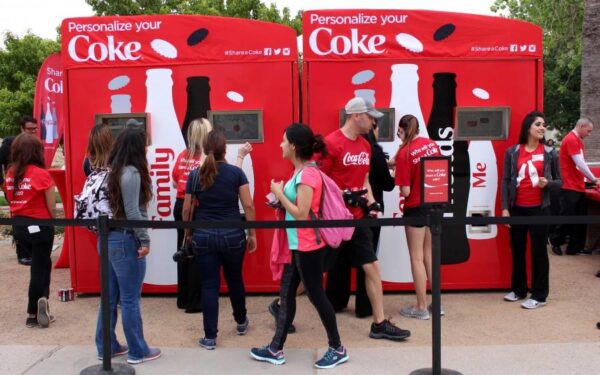
Social media is a constantly changing world where trends come and go in the blink of an eye. With so much information available at the touch of a button, businesses need to find ways to stand out and connect with their audience. One of the most powerful tools for achieving this is the humble hashtag. This symbol that was once only found on telephone buttons has now become a dynamic tool that can boost brand visibility, engagement, and reach. To make the most of hashtags, it’s essential to adopt best practices in your social media management strategy.
Research Relevant Hashtags
The first step in any hashtag strategy is research. Just as market research informs business decisions, understanding the hashtag landscape informs your social media approach. Take the time to identify the hashtags that resonate with your industry, content themes, and target demographic. There are several tools you can use to achieve this, such as Hashtagify, Rite Tag, or even the built-in insights provided by social media platforms. By using popular and trending hashtags, you align your content with ongoing conversations, increasing its discoverability and potential for engagement.

Finding relevant hashtags is only the first step. You also need to use them effectively. Hashtags should be incorporated seamlessly into your content, rather than appearing as an afterthought. When used correctly, they can amplify the impact of your message and connect you with a larger, more targeted audience.
To use hashtags effectively, it’s important to understand their purpose. Hashtags are essentially a way of categorizing content, making it easier to find and engage with. They allow you to join in on conversations and connect with people who share your interests. By using the right hashtags, you can attract new followers, increase your reach, and build your brand.
Hashtags are powerful tools for building an online community around your brand. They serve as rallying points that connect individuals under the umbrella of your brand identity. By crafting a unique and memorable branded hashtag, you can encourage user-generated content, stimulate conversations, and foster a sense of belonging among your audience. But how do you create a hashtag that truly stands out?
- Firstly, brevity is key. Long and complex hashtags might be difficult to remember or type accurately. Hence, it is recommended to keep your branded hashtag concise, relevant, and aligned with your brand’s essence.
- Secondly, when using hashtags, moderation is crucial. It’s easy to get carried away and inundate your posts with numerous hashtags, hoping to cast a wider net. However, such an approach can backfire, making your content appear cluttered and desperate for attention. A judicious approach is recommended, with 2 to 5 relevant hashtags per post generally considered effective. Each hashtag should contribute meaningfully to your content’s message, enhancing its context rather than overwhelming it.
- Thirdly, for hashtags comprising multiple words, consider capitalizing on the first letter of each word. This practice, known as the camel case, improves readability and prevents potential misinterpretations. Using capitalization makes it easier for your audience to understand and remember the message you are trying to convey. For instance, #Summer Adventure is easier to understand than #summer adventure.
- Lastly, relevance is key. The essence of effective hashtag usage lies in relevance. Your hashtags should be relevant to your brand and the content you’re posting. Using irrelevant hashtags can lead to negative consequences, such as losing credibility and engagement with your audience.
Different social media platforms have distinct hashtag norms. Instagram and Twitter commonly use hashtags to categorize and discover content, while Facebook’s hashtag usage is less prevalent. Understanding these platform-specific differences is crucial in tailoring your approach. Instagram’s Stories and IGTV allow clickable hashtags, expanding your content’s visibility.
Finally, it’s essential to monitor the performance of your hashtag campaign continually. Effective hashtag usage isn’t a one-time endeavor. By tracking the success of your hashtags, you can identify what’s working and what’s not, fine-tune your strategy, and achieve long-term success. So, craft your hashtags with care, tailor them to each platform, and monitor their performance to attract an engaged audience and achieve your social media marketing goals.
It’s important to choose the right hashtags that align with your brand’s voice, values, and goals. With the help of social media analytics tools like Instagram Insights and Twitter Analytics, you can track which hashtags are driving the most engagement, reach, and impressions, and refine your strategy accordingly. By encouraging user participation and tapping into seasonal and event-based hashtags, you can build a community around your brand that’s rooted in shared experiences and values. Finally, don’t be afraid to experiment with new hashtags and strategies to stay ahead of the curve. With the right hashtag strategy, you can take your social media presence to the next level and unlock new opportunities for growth and engagement.
Create Branded Hashtags
Another significant aspect of hashtags is branded hashtags. These are unique to your brand and can foster a sense of community among your audience. Branded hashtags encourage user-generated content and create a space where your followers can engage with your brand and each other.
For example, Coca-Cola’s #ShareACoke campaign encouraged customers to share photos of personalized Coke bottles with their names on them, leading to a surge in user-generated content and engagement on social media.

That insight informed the team’s strategy for the 2018 campaign.
“This program is not about the size and power of Coke,” Kibe expressed. “It’s about the intimacy and proximity of Coke and the meaning behind every time you share a Coke.”Moz
Branded hashtags are memorable and reflect your brand identity, making them an essential part of any social media strategy.
Maintain Conciseness
Hashtags are a crucial tool for social media success, allowing users to categorize their content and make it easily discoverable by others. However, the ideal number of hashtags varies depending on the platform and content type. To avoid appearing spammy or cluttered, it is generally recommended to use 2 to 5 relevant hashtags on platforms like Instagram and Twitter. Moreover, it is important to capitalize the first letter of each word in a multi-word hashtag for improved readability.
Participating in trending conversations is another effective way to leverage the power of hashtags. By using hashtags related to current events or popular topics, users can join in on the conversation and contribute to the community. However, it is crucial to ensure that your content genuinely adds value to the conversation, rather than jumping onto trends without relevance.
Capitalization for Readability
For hashtags comprising multiple words, consider capitalizing the first letter of each word. This practice, known as the camel case (#Camel Case), improves readability and prevents potential misinterpretations. For instance, #Summer Adventure is easier to understand than #summer adventure.
Relevance Is Key
The essence of effective hashtag usage lies in relevance. Ensure that the hashtags you incorporate directly relate to your content. Inauthentic or misleading hashtags can alienate your audience and damage your brand’s credibility. The goal is to attract an engaged audience genuinely interested in your content, rather than amassing transient clicks.
Platform Norms and Nuances
Different social media platforms have distinct hashtag norms. While platforms like Instagram and Twitter commonly use hashtags to categorize and discover content, Facebook’s hashtag usage is less prevalent. Understanding these platform-specific differences is crucial in tailoring your approach. For instance, Instagram’s Stories and IGTV allow clickable hashtags, expanding your content’s visibility.
Leverage Trending Hashtags
Participating in trending conversations can offer a real-time visibility boost. Monitoring trending hashtags and weaving them into your content can align your brand with popular discussions and expand your reach. However, tread carefully; ensure your content genuinely contributes to the conversation rather than exploiting the trend for shallow attention.

Tell a Story
Hashtags have evolved from mere labels to narrative tools. Crafting hashtags that tell a story, evoke emotions, or convey a message can intrigue and engage users, compelling them to explore your content further. A well-crafted hashtag can transcend its functional role and become an integral part of your brand’s storytelling.

Monitor Performance
Effective hashtag usage isn’t a one-time endeavor. Regularly analyzing hashtag performance provides insights into what’s working and what isn’t. Platforms like Instagram Insights and Twitter Analytics offer valuable data on which hashtags drive the most engagement, reach, and impressions. This data-driven approach empowers you to refine your strategy continually.
Encourage User Participation
Brands are no longer just creators; they’re curators of user-generated content. Encouraging your audience to use your branded hashtags in their posts can amplify your reach exponentially. It transforms your followers into advocates, building a community around your brand that’s rooted in shared experiences and values.

Mindful of Seasonality
Incorporating seasonal and event-based hashtags aligns your brand with ongoing trends and occasions. Capitalize on holidays, celebrations, and noteworthy events to infuse your content with relevance and timeliness.
Localize Appropriately
For businesses with a local presence, location-based hashtags connect you with nearby audiences. These hashtags allow you to tap into local conversations, boosting engagement among community members.
Experiment and Iterate
Social media trends evolve rapidly. Don’t be afraid to experiment with new hashtags and strategies. Analyze the results, iterate your approach, and refine your hashtag strategy based on your audience’s response.
Conclusion:
In conclusion, hashtags wield unparalleled power in the world of social media management. To get the most out of hashtags, research and adapt to platform norms and audience preferences. Remember, the key is to strike a balance between creativity and strategy, ensuring that your hashtag usage aligns with your brand’s voice and objectives. In this era of information overload, mastering the art of hashtags can be a transformative step toward meaningful engagement and brand recognition.









